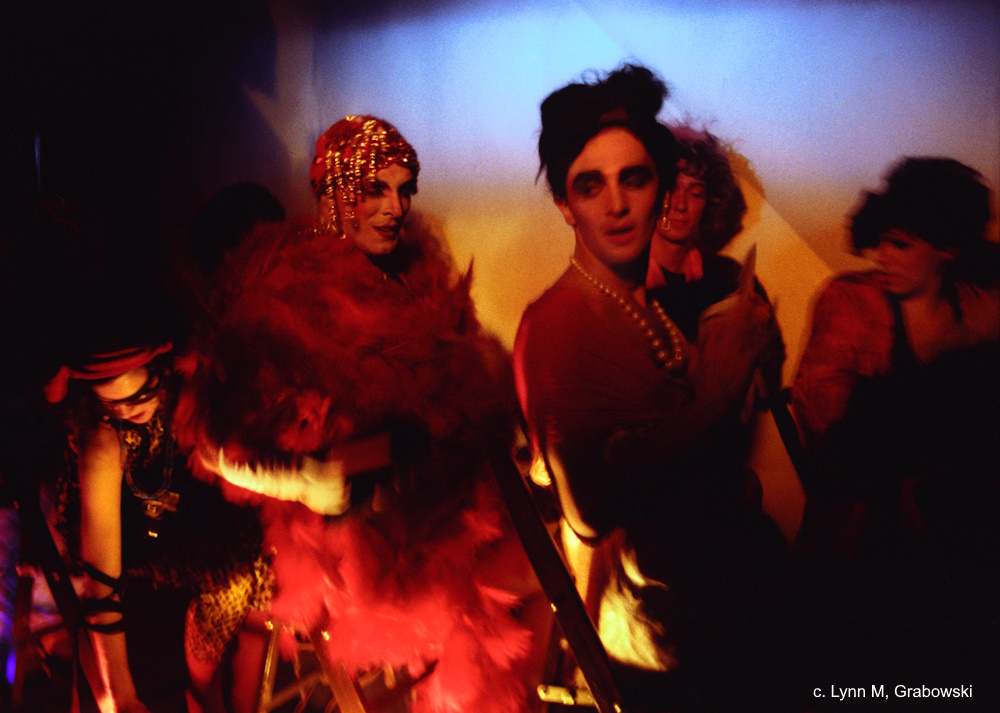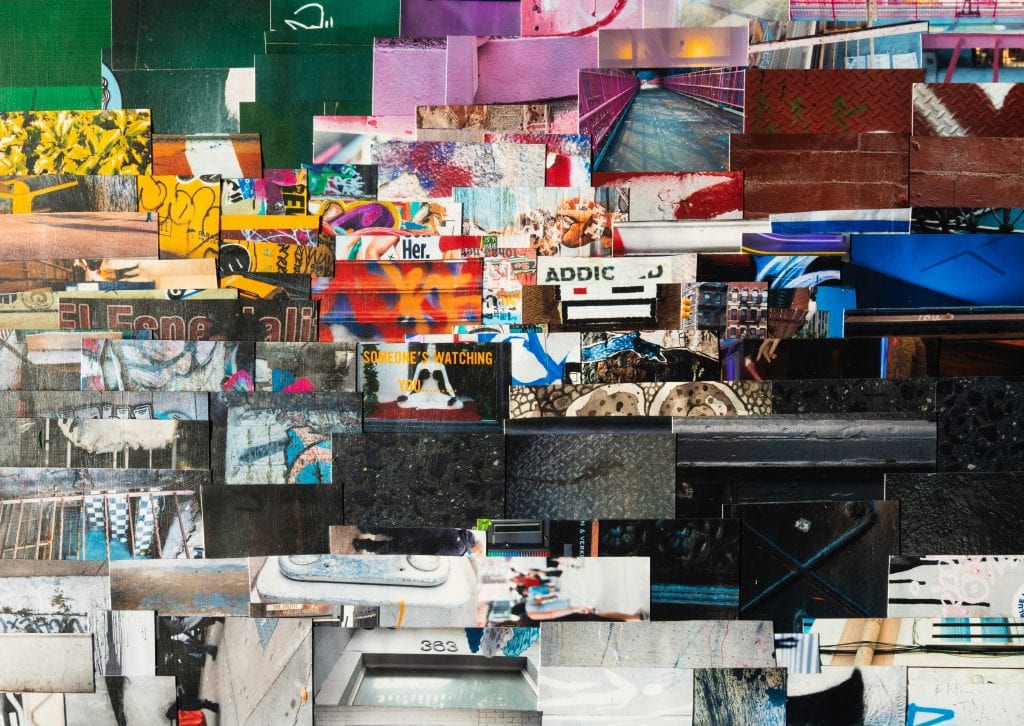Click Here to view the catalog for Linus Coraggio’s Ramifications.
Apocalyptic Now. On the last day of July 2019, a thunderstorm plays soundtrack to the works that line the walls of Linus Coraggioʼs studio. It is an immersive environment, a portal into the apocalyptic subversion that is the “now” of Coraggio’s work. Ranging in scale from table-top size to monumental, his art is one steady and defiant stream of counter-consumption that includes sculptures of discarded metal, abstract canvases, and stacks of woodblock prints that are like giant pages from underground comic books. In this space, dystopian/utopian dreams are quantum entangled: street aesthetics meet hip-hop graffiti meet 50ʼs abstract expressionism and beatnik nonconformity. Standing in his workroom, jam-packed with tools, machinery, and drawers of supplies, Linus says with a sly grin, “I’m not a hoarder; I’m a saver. These things are calling to me. ‘Use me, use me.’” His job, his labor, is to heed that call.

Are We Not Men? Coraggio’s sculptures are made from his ongoing ‘get what you need’ collection of worn, used, beat- up, and disassembled wrenches, pliers, clamps, chains, hub caps, street signs, doorknobs, horseshoes, tin snips, scissors, forks, spoons, knives, etc. His detritus is the gold vein of his anti-gravitational welded constructions. One can readily imagine Coraggioʼs keen sense of play. As a testament to Chaos Theory— one piece is actually titled 3D Fractal (2009)— the artist intuits each next puzzle piece as he constructs a totality. He shares David Smithʼs affinity with drawing (think of Smithʼs iconic Hudson River Landscape), Judy Pfaffʼs understanding of volume and composition, and Miroʼs sense of space. A work called Mirror (2002) incorporates a circular mirror in a swirl of metal, drawing with a rectangular counter-point served as a tray. There is a cascading flow in Coraggioʼs metal works that pulls the viewer inside the ‘body’ of the sculpture. There we find the recognizable. The result is an organic structure far removed from any Cartesian or Newtonian rationale. Defying gravity, denying weight, he creates multi-dimensional interstices of real depth. New York City encodes Coraggioʼs DNA. Iʼm reminded of the Mohawk construction workers of the 30ʼs, reaching skyscraping heights. He envisions a soaring WTC (2012)—much like Tatlinʼs Monument to the Third International—to replace the soulless behemoth he believes will eventually come down. “Are we not men?” the sculptures ask. Yes, they answer; we are of human, no longer of the corporate cookie-cutter machine.
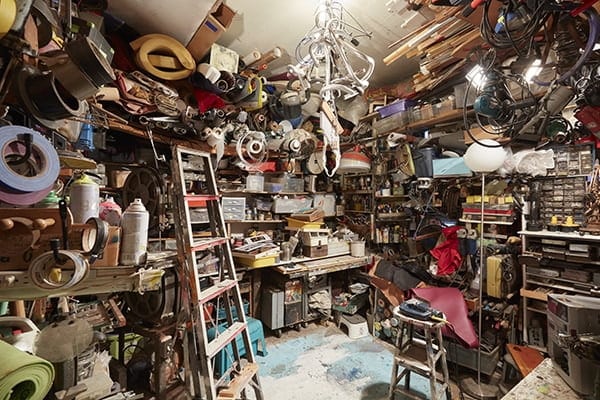
The Wild Ones. Looking at parts. Understanding function. Thatʼs what mechanics do. Coraggio has a natural talent for doing just that… only the function is of his own intention. He seeks the remnants of destruction in order to create his very own dream machine. Evident in his motorcycle series (1986–present) he evokes mobility; the open road; the unburdened, uncomplicated, un-obligated life; Brandoʼs bad-boy sexuality; and Fonda and Hopperʼs not-so-easy ride. In several of these works he builds the wheels from scratch, from scrap—rim, hub and spoke—literally re-inventing the wheel. Regarded as a male fantasy (though of course there are woman bikers) Corraggio embraces the myth as part of his personal history (he owns two bikes), expressive of a desire to convert the machine into a means of liberation. In these works, as in all his conversions, a motorcycle is no longer a motorcycle—ceci nʼest pas une moto). The artwork itself becomes the vehicle of travel and liberation. Born to be wild.
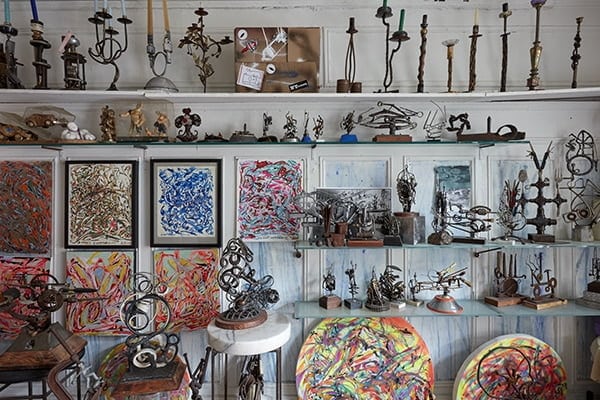
Back to Yin. Iʼm drawn to a painting called Precrasher (2017). What does an artist do when heʼs thrown off his bike and lands on his feet with a bruised psyche as collateral damage? He paints a joyous ride: out-of-time tracings of calligraphic highways in infinite space with strokes of matte and Day-Glo paint—like flashes of the world going by. His pictorial space is a mash-up of 50ʼs existential abstraction expressed in non-representational fields, and hip-hop subway cars created by artists like Fab 5 Fredd, Futura 2000, and Dr. Revolt. Coraggio carries the baton of abstract expressionism—think Bradley Walker Tomlin and Richard Pousette-Dart—upgraded with the knowledge of psychedelic drugs and street tags. A series of tondos, Color Hole (2019), Round Rain (2019), Tornado (2019), call on the circle to remind us the world is all curves, that the feminine aspect is the residence of all our creations. Coraggio may be the renegade bad boy—still, to this day, calling women ‘chicks’—but he knows the sub-conscious, the unknown, the feminine aspect (the yin of the yang) is where the action is. He knows too that the role of the misfit resists patriarchyʼs control. Like the Hindu goddess Kali, punk anarchist as destroyer.
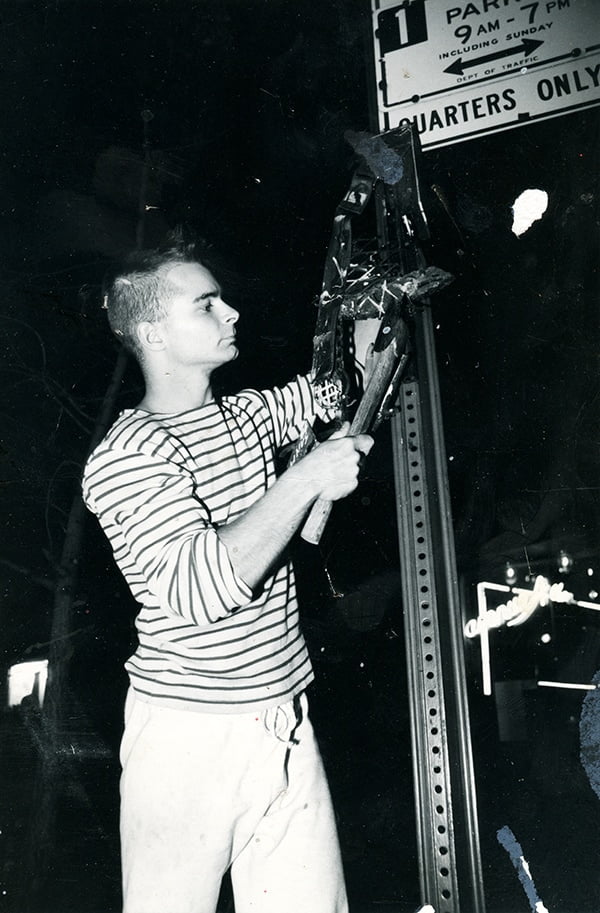
The Good Old End Days Today. Coraggio was admitted to the Whitney Independent Study Program in 1986. Heʼd already been in attendance at the Whitney earlier in the decade, selling his art along the building’s outside wall. In a series of paper-cast woodblocks, he tells his story of those first years out of art school. Captions read, “just buy it you rich shithead…inside bad and pretentious art.” He lasted about five months in the Whitney Program. His allegiance was clearly to the street rather than to academia. “Too much sitting around a table talking,” he says. Instead he went to his own school, which he named the Rivington School (1985-1997): the politically-incorrect, anti-commercial, anti-real-estate response to the East Village art scene. Their vision of end days feels prescient as the looming chaos of authoritarianism and climate change is ever more real. More recently, in collaboration with Anthony Haden-Guest, collages called Optimism, Corruption and Apocalypse (2019) pair text and pieces of metal objects, declaring, “I am extremely close to acquiring all the necessary bits and pieces to build a foolproof device…then too!!! Iʼll destroy the planet.” Inside the apocalyptic mind he understands that everything, good or bad, is invention.
Night Lights. Coraggio is keenly aware of the esoteric nature of welding. The work is demanding. Focus is essential. Methodical and fatiguing, the welder is in his own world behind the mask. Each weld must be strong enough to support the weight of the workʼs existence. In the realm of darkness and fire, Coraggio fine-tunes his vision. As the artist shaman, he knows that in the darkness there is light, that fear can serve as initiation. A series of Candlesticks (1986–present) stand along the studio shelves. Each its own character, they have a Charles Addams sardonic functionality—ingeniously, delightfully anticipating the next blackout. In Car Headlight Chandelier (2008), we look up to see a conglomeration of headlights that make a circle, a completion, a hole/whole, like a galactic center finally revealed to us from our collisions with the machine. In this piece, the spirit of John Chamberlainʼs car sculptures and Ed &Nancy Kienholzʼs tableaux levitate, elevating into an endless loop. Look up. Look inside. Embrace the darkness. If Coraggioʼs vision is one long road trip into the dark, lonely American night, in resistance we can become fellow travelers on that road less traveled. Our lights will guide and lift us. We are cosmically wired. There is hope.
